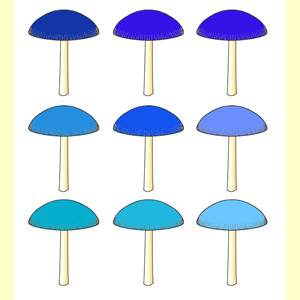
Colour should be assessed on mature fruit-bodies in good light conditions (natural light is best). When the pileus is a mixture of colours, choose the predominant colour (so if mainly black with a dark brown edge, and covered in small white spots, choose black). Record colour from the visible pileus surface, irrespective of whether this is remnants of a veil overlying the true surface of the pileus.
If the colour can best be described as a modification of one colour by another, you should usually choose the main colour. So, if the colour is reddish orange, choose orange, and if yellowish brown, choose brown. However, where there are tints of blue, green or purple, these states should be chosen.
Colour charts are referred to in capitals: BFF (Royal Botanic Gardens Edinburgh, 1969), METHUEN (Kornerup & Wanscher, 1978) and RAYNER (Rayner, 1970).
The same colour name can be applied to different colours in different colour charts (compare apricot in BFF and METHUEN). If a colour is on the border between two of the categories (such as the orange yellow colour apricot, or the blue green colour verdigris) choose both colours.
Choose this state if: the pileus is blue. Included here are colours such as azure, cyan, flax blue, sky blue and eye blue.
